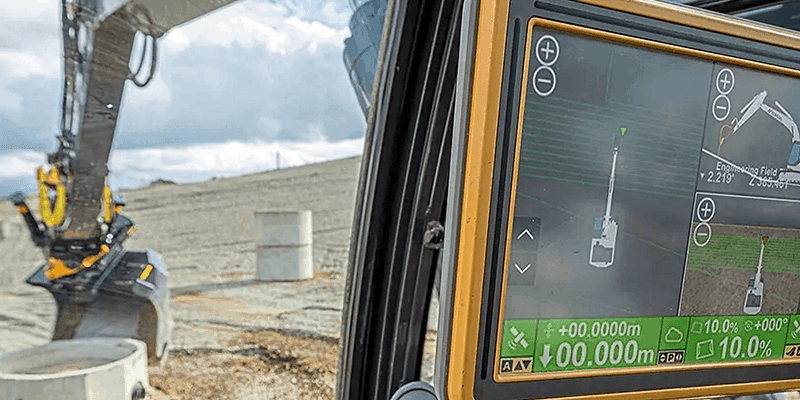Topcon’s Andy Flood believes automated machine control can offer more than just a short term ’fix’ for the construction sector.

Moving towards more sustainable construction practices doesn’t only benefit those that are setting ambitious Net Zero goals – it positively impacts businesses too, often reducing fuel expenses and the likelihood of mistakes that, ultimately, make projects more profitable.
Topcon estimates that, based on the current number of graders, excavators, pavers and other construction machinery fitted with the company’s machine control technology, automation could reduce CO2 by around 600,000 tonnes per year. Investing in automation can helps businesses tackle sustainability long- term rather than turning to quick fixes.
Precision, safety and more
The automation of machine control allows the construction process to be tackled with complete precision. While teams will still need to monitor machinery on-site, project managers can track progress remotely and make changes from anywhere in the world. Plus, remote working can mitigate the health and safety risks associated with being on-site.
Machine control also boosts efficiency by reducing the likelihood of user error and costly rework by giving you the power to put in the right material at the right height, or to take the right amount of material out. Rework can be costly as it relates not only to one crew, but also to the upstream and downstream work being performed on the whole site – which can cause further delay and frustration.
Machine control technology also allows contractors to more accurately estimate the specific amount of time and materials needed for a job. This allows for better allocation of equipment and personnel, as well as better control of material costs. For example, if you remove too much material from the site, time and resource is wasted on removing the material and then there are further expenses and resources needed to deliver new material. On the other hand, contractors may incur unnecessary fuel and labour costs by delivering more material to site than what is actually needed. Machine control ensures material costs can be calculated accurately for any given site.
Automated machines will soon be able to conduct most on-site work right-first-time with minimal supervision through artificial intelligence. Systems like Topcon’s MC-X machine control solutions and Sitelink3D software are already bringing this to life and the data and learnings will underpin how construction delivers on its sustainability goals.
Alongside the constant advances in electric heavy machinery, automation will help to significantly reduce carbon across the industry.
Working smarter
Automation also addresses another significant challenge for the construction industry - the skills gap. Less experienced operators will be able to operate new equipment, monitoring and data analysis solutions through easy-to- use interfaces, helping to significantly shorten the training window and allowing teams to always deliver jobs at the expected quality, regardless of experience or skill.
This also contributes towards sustainability as improved accuracy means fewer errors, less material waste and optimised heavy machinery movements – reducing the carbon emissions produced on site.
Using automated electric machinery, rather than diesel powered, and cloud data technologies means construction businesses have a suite of tools that will help them towards their sustainability goals and bring the industry closer to its net zero targets.
Barriers to sustainable working
Small construction companies have proved they are quicker to adapt than their larger counterparts by adopting these automated solutions at pace and have embraced the benefits of improved productivity and potential to cut costs. In contrast, major contractors are adopting automation for commercial benefit but tend to ‘watch and wait’ to see how smaller firms are benefitting and which problems they encounter.
Multinational businesses are even more hesitant to adopt due to complexities surrounding multiple governmental policy changes.
Taking the right approach
The key to achieving improved sustainability credentials is through precision and intelligence. When construction firms harness the power of data, they can truly understand what’s happening on the ground and amend their workflows accordingly.


